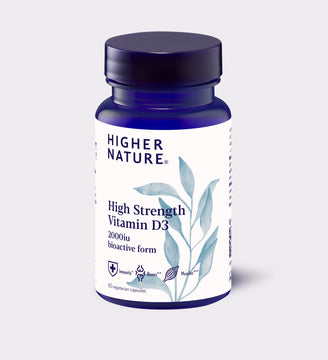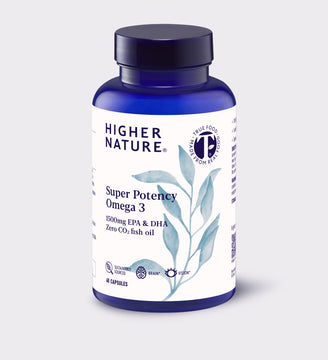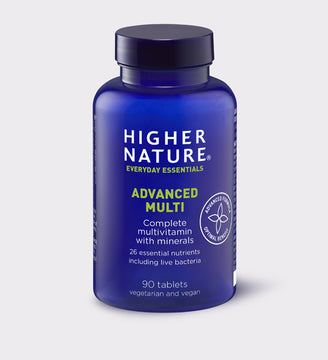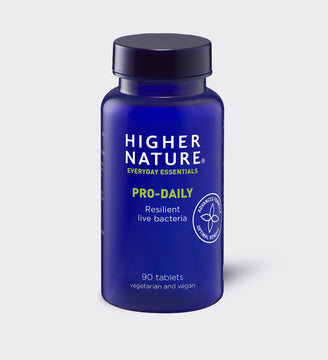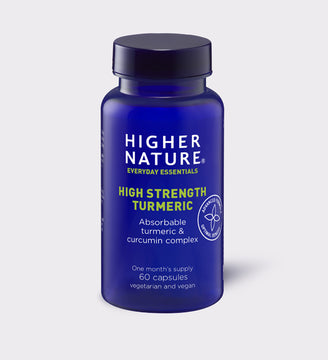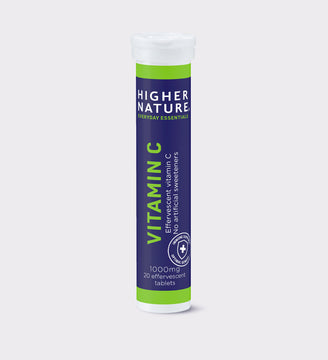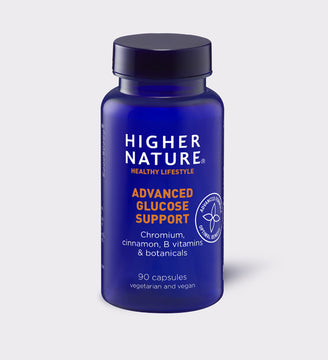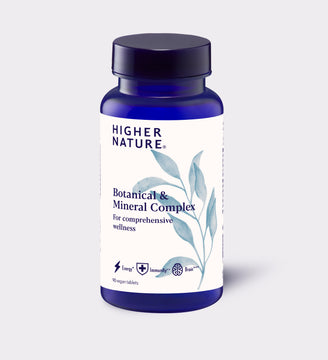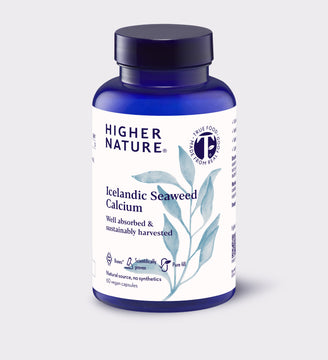
What is a healthy balanced diet?
Higher Nature Nutrition Team
We all know that we should eat a healthy balanced diet, but what exactly does this mean?
Every day we are bombarded with details of the latest and “best” way of eating: vegetarian, vegan, flexitarian, pescatarian - but whatever way you choose to eat, your diet must be up to the task of providing you with energy, supporting multiple body systems, keeping your bones strong and maintaining a healthy body weight – quite a lot to ask!
What your body needs
Your body needs foods that are as fresh as possible, not processed foods which tend to be high in salt, fat and sugar and stripped of many nutrients - these should not be a regular feature of your diet.
Let’s break it down…………………………
It is the refined carbohydrates that are high in sugar, creating a quick energy burst which is followed by the inevitable slump. This is when you have a craving for the next hit- and so it goes on! So cakes, biscuits, sweets, sugary drinks, and white grains are out – or at least not to be consumed on a regular basis
Protein
Protein is vital for muscles, bones, tissue repair, brain and hormonal health and the immune system. Protein helps maintain a steady blood sugar balance and also keeps you feeling fuller for longer. Chicken, turkey, fish, eggs, dairy products, tofu, quinoa, buckwheat, nuts, seeds, pulses and tempeh are all high in protein. Remember – variety is the spice of life! Don’t rely on one type of food, but eat a good balance of different types of protein.
Fats
Fat does not make you fat! It’s all about balance. You need fat for energy and to provide the building blocks for brain and hormonal health. What your body needs are the essential fats –omegas 3 and 6. Omega 6 is usually plentiful in the diet, being found in poultry, eggs, nuts, seeds, soybeans, fish and oils such as sunflower. Omega 3 fats have anti-inflammatory activity and are crucial for the brain and heart as well as for healthy eyesight, but they are not quite so easy to come by! Oily fish is a great source as well as flax and chia seeds and a variety of nuts. Nut and seed oils can be used in smoothies or salad dressings and don’t forget to include the monounsaturated fats found in olive or avocado oil.
Fibre
Fibrous foods keep you regular, eliminate toxins, support a healthy gut flora and keep you feeling fuller for longer. They also reduce the cravings that mess up your blood sugar levels.
Fibre is found in wholegrains, vegetables and fruit, beans and lentils, nuts and seeds.
Water
We are two thirds water so we must stay hydrated to keep our body functioning properly. Dehydration leads to low energy, hunger pangs and lack of concentration. If you are dehydrated your body can give you false hunger signals – making you eat more than you need. Water (with a slice of lemon or lime if you prefer) and herb teas are a great way to hydrate the body but tea and coffee also count – in moderation! Too much caffeine can exacerbate anxiety, irritability and insomnia.
Micronutrients
These are the vitamins and minerals that every cell needs to perform their daily tasks. Get the right intake of carbohydrate, protein, fat, fibre and water and you will give yourself the best chance of getting the right micronutrients.
Watch out - nutrient thief about!
There are also various “thieves” or anti-nutrients to consider – these are foods, drinks or activities that use up the valuable nutrients that we consume. Alcohol, smoking, sugar, excessive exercise and exposure to pollution use up more of your body’s supplies of micronutrients to counteract their negative effects. Stress also depletes micronutrients – particularly vitamin C, B vitamins and magnesium. The process of refining foods and producing processed foods also strips out many of the essential nutrients.
So, what does a balanced diet look like?
*Source: BANT June 2015 Wellness Solution Guidelines
Size Matters
Open out the palms of your hands and hold them together out in front of you. This is your best tool for eating a healthy balanced meal. This is the size each of your meals should look like. Eat one palm size of protein, one palm size of slow release carbohydrate and fill the rest of the space with vegetables, salad or fruit.
Five-a-day (more if you can!)
Vegetables and Fruit - How much is a portion?
One portion is about 80g.
This is roughly equal to:
- 3-4 tablespoons of cooked vegetables (4 for the leafier ones)
- 3 sticks of celery
- 3 tablespoons of beans (this counts as only 1 portion a day even if you eat more)
- a dessert bowl of salad
- 7 cherry tomatoes
- an apple
- a nectarine
- a pear
- two plums
- a handful of berries
- 1 tablespoon of dried fruit
There should be a good balance between fruit and vegetables - by placing your focus on the vegetables first and topping up with fruit, you will avoid consuming too much sweet fruit which can skew your blood sugar levels.
Top Tips for healthy eating
- Fill your fridge and your cupboards with food that supports health, not food that doesn’t. If it’s not there you can’t eat it – this works either way.
- When you make a shopping list try putting all the fruit and vegetables together so that you can see whether you have a good mix – helping you to eat the rainbow.
- Try planning your menus a few days or a week ahead before you do your shop. This gives you a chance to give a bit of thought to your meals so that they include all the necessary elements. It doesn’t mean you have to stick to it religiously, you may swap it round a bit if plans change, but it does give a good base point.
- Think about when you have more time to cook and plan for a meal which perhaps takes a little longer but can be doubled up and eaten the following day or frozen for a time when you have no time to prepare.
- Always keep a cupboard of staples – brown rice, quinoa, whole-wheat pasta, coconut oil, infused olive oils, tins of pulses and tomatoes.
- Try doing your shop online – this helps avoid temptation and helps keep you focused on the good stuff.
- To maximise the nutrients on your plate avoid keeping vegetables and fruit for long periods before using. Over-cooking or frying also depletes them so try steam-frying instead by adding water as they start to cook and putting a lid on.
